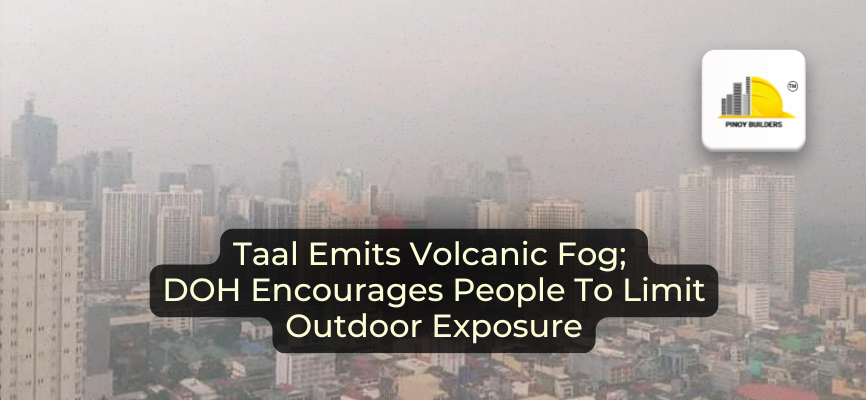MANILA — The Taal Volcano’s recent activity has led to the emission of volcanic smog (vog) that is now affecting Metro Manila and nearby areas. This phenomenon has prompted local authorities and health officials to issue advisories, urging the public to limit outdoor exposure due to potential health risks.
The Cause of the Haze
The haze currently observed in Metro Manila has sparked widespread concern. However, according to Dr. Teresito Bacolcol, Director of the Philippine Institute of Volcanology and Seismology (Phivolcs), the haze over Metro Manila on Monday is likely due to local pollutants rather than volcanic smog from Taal. Dr. Bacolcol emphasized that while Taal’s volcanic activity is significant, local air pollution sources also contribute to the reduced visibility and poor air quality in the area.
The Environmental Management Bureau’s air quality monitoring on Monday morning revealed unhealthy air quality levels for sensitive groups in Caloocan, Parañaque, and Pateros, with Makati logging a very unhealthy air quality index. These findings underline the mixed sources of pollution affecting the region, where local pollutants and vog interact to create hazardous conditions.
Below are the LGUs that declared suspension in the Philippines:
- Balete
- Balayan
- Malvar
- Laurel
- San Jose
- Mataas na Kahoy
- Agoncillo
- San Nicolas
- Nasugbu
- Lemery
- Lian
- Talisay
- San Luis
- Alitagtag
- City of Calaca
- San Pascual
- Calatagan
- Tuy
- Cuenca
- Sta. Teresita
- Bauan
- San Juan
- Taal
- Padre Garcia
- Ibaan
- Silang
- Mendez
- Indang
- Alfonso
- GMA (General Mariano Alvarez)
- Carmona
- Gen. Emilio Aguinaldo
- Amadeo
- Maragondon
- Naic
- Carmona
- Calamba
- Biñan
- Los Baños
- Muntinlupa
- Las Piñas
In addition to the disruption of classes, the vog has caused poor visibility, making daily activities more challenging for residents. Health concerns are also on the rise, with reports of eye, throat, and respiratory irritation among those exposed to the smog. The Department of Health (DOH) has issued advisories urging people to take precautions to protect themselves from the harmful effects of vog.
Understanding Volcanic Smog (Vog)
Volcanic smog, or vog, forms when sulfur dioxide (SO2) emitted by a volcano interacts with moisture, surface oxygen, other volcanic gasses, and particles, as well as sunlight. In Taal’s case, the calm winds around the volcano have prevented the gasses from dispersing, leading to the accumulation of vog in the surrounding areas.
Phivolcs reported that Taal spewed 3,355 tons of sulfur dioxide on August 15, contributing to the formation of vog in the region.
Health Advisory and Precautions
As the volcanic smog from Taal continues to affect daily life, residents must stay informed and follow health advisories. By taking the necessary precautions and remaining vigilant, communities can better navigate this environmental challenge while prioritizing their health and safety.
Below are the emergency hotlines you can call in case of emergencies. Observing NDRRMC notifications is also encouraged.
NDRRMC Hotline:
- (02) 911-1406
- (02) 912-2665
- (02) 912-5668
- (02) 911-1873
BFP Hotline: Bureau of Fire Protection
- (02) 729-5166 9
Philippine Red Cross Hotline
- 143
- (02) 527-0000
- (02) 527-8385 to 95
Philippines Emergency Hotline
- 117 (Metro Manila)
- 911










